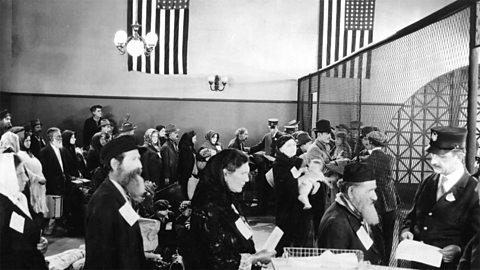Immigration
The purpose of the Open Door policyPolicy of accepting immigrants from various countries. was to make immigration as easy as possible. There was a mixture of people living in America during this period. A combination of push and pull factors made people immigrate to the USA. The push factors made people want to leave their own countries, and the pull factors attracted them to the USA.

During 1907, 1.25 million people were processed on Ellis Island. As the number of immigrants increased, some Americans began to doubt the government's Open Door policy. The government did not believe that the new immigrants enriched the life and culture of the USA. The US Congress passed laws to restrict immigration and each law in turn was more severe than the previous one. These were the 1917 Literacy Test, 1921 Emergency Quota Act, 1924 National Origins Act and 1929 Immigration Act. The Open Door was now closed to many.
As a result, there was more fear of immigrants, xenophobia and racial persecution. Many Americans were frightened by the Communist Revolution that had happened in Russia in October 1917. The American Socialist Party and the American Communist Party were established during this period. Some believed that a communist revolution was going to happen in America. This was known as the Red Scare.
Nicola Sacco and Bartolomeo Vanzetti were Italian immigrants. The two men acknowledged that they were radicals and that they had avoided serving in World War One. In May 1920 Sacco and Vanzetti were arrested and accused of armed robbery on a shoe factory, during which a significant amount of money was stolen and two people were killed. From the beginning, public opinion was against them because of their political ideas and because they were immigrants. In August 1927 they were both executed by electrocution in Charlestown prison.